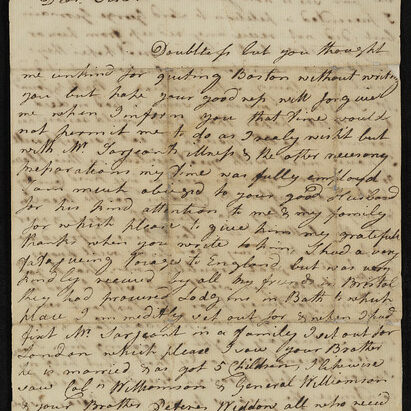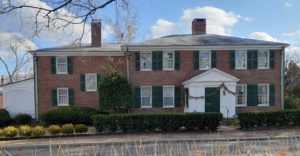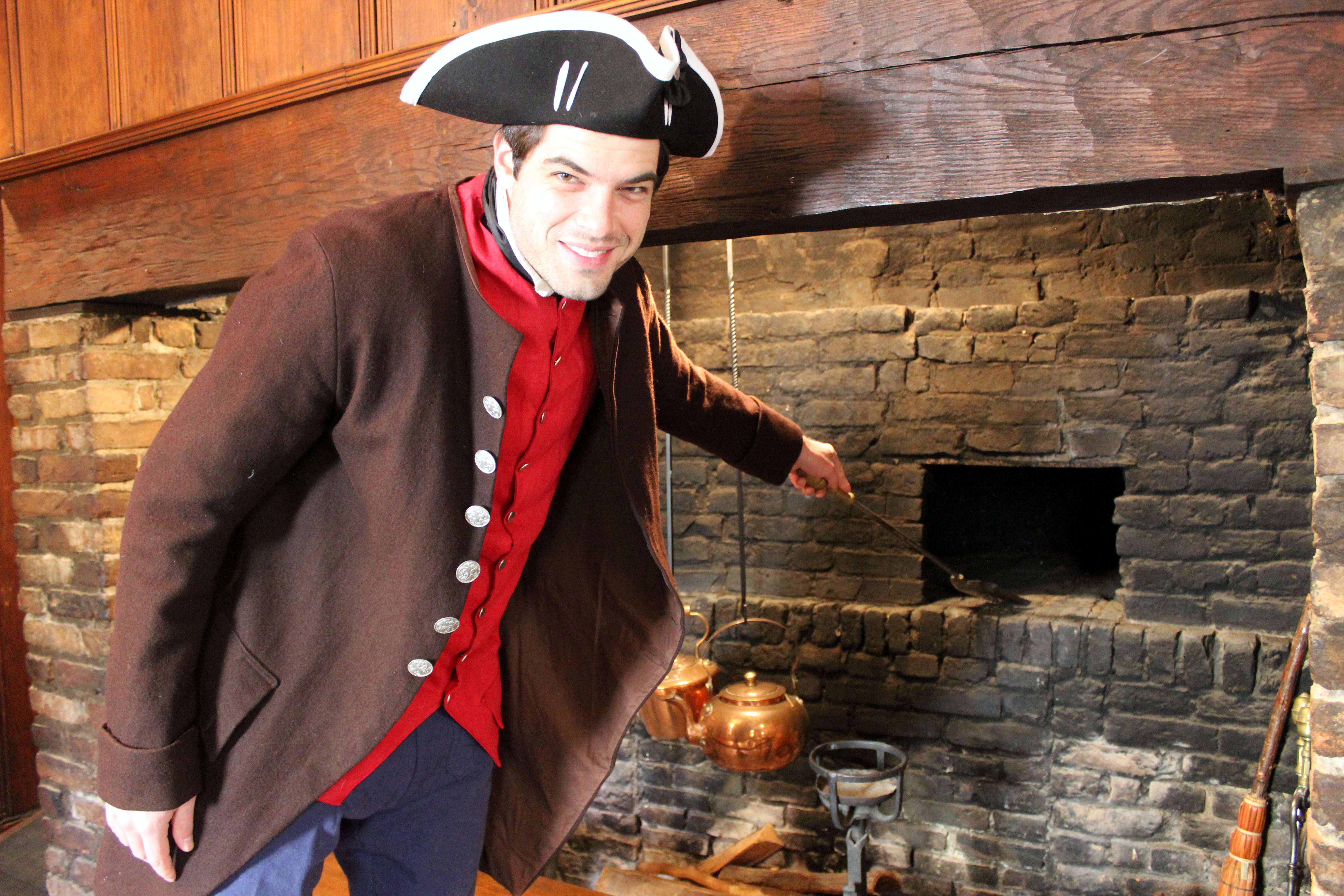
Who Were the Loyalist Women of Cambridge? Part 1: Mary Browne Serjeant
This post is the first in a series on Loyalist Women of Cambridge. Click here to read the introductory post.
By MaryKate Smolinski, Tufts University Intern, May 2020
A great deal of Mary Browne Serjeant’s life is well-documented thanks to her family’s involvement in the Society for the Propagation of the Gospel, her Loyalist petition, and surviving letters. Mary was born around 1736 to Mary Cox Browne and Arthur Browne. Her father was an Anglican minister and was sent from Ireland to New England by the Society for the Propagation of the Gospel (SPG). He was first assigned to Providence, Rhode Island, where Mary was born. However, in 1736, when Mary was an infant, the Browne family moved from Providence to Portsmouth, NH, where she spent her childhood with her eight siblings. Mary, nicknamed Polly, attended church services at her father’s Anglican church, which served 50-60 families. She learned to read, write, and complete domestic duties.
Mary grew up in an affluent household and socialized with other upper-class Portsmouth residents. Her parents owned at least one slave, a man named Jess. On October 31, 1765, Mary, age 29, married Winwood Serjeant, possibly age 35. Her father performed the ceremony at his Portsmouth church. Winwood was also an Anglican minister and, following their wedding, the Serjeants travelled to South Carolina, where Winwood was posted by the SPG.
Mary moved away from her family for the first time, but remained in contact with them through letters. Her mother wrote to the newlyweds on October 25, 1766, and spoke of Cantabrigians’ anxiety to have Winwood leave the South and take on the role as minister at Christ Church in Cambridge; however, “we suppose my dear Polly’s Circumstances has prevented your coming. I trust in God by this time she is safely deliverd [sic].” This likely referred to Mary’s pregnancy with her first child, a son named Marmaduke Thomas, who was born around 1766. The Serjeants were likely waiting for Mary to give birth and for the baby and mother to be healthy and strong enough to travel before embarking on their journey to Cambridge. The same 1766 letter shows the Browne family’s happiness that the Serjeants would be much closer to them (60 miles away rather than 980 miles). Mary likely shared this happiness, especially as she began to have children of her own. Their closeness would allow for visits between the families.
In 1767, the new family of three relocated to Cambridge and Winwood Serjeant became the minister at Christ Church. Winwood was given a salary of £100 per year and initially received £18 per year in lieu of a house and glebe – the piece of income-producing land that was customarily part of a minister’s compensation. Mary first set up their home at 7 Waterhouse Street. By 1769, Mary was pregnant again. Her mother wrote to her in April 1769 hoping that Mary would have “safe deliverance of a fine Boy,” and that she would visit sometime in June or sooner to help with the newborn. Instead of a “fine Boy,” Mary gave birth to her first daughter, Mary.
Childrearing and housekeeping would have occupied Mary’s time. The Serjeants did own at least one enslaved man and likely had additional household help in the form of servants or slaves. In 1771, her brother Maramaduke Browne, then rector of Trinity Church of Newport, Rhode Island, died and it is possible that Mary assumed at least temporary care of his children.
Mary and her husband continued to correspond with Mary’s youngest sister, Elizabeth Browne Rogers Roche. The sisters would visit each other and were quite close. From letters to Elizabeth, we know that on April 5, 1772, the Serjeant family had their son Marmaduke baptized. His godparents were Col.John Vassall, Ralph Inman, and Elizabeth Murray Inman, demonstrating the Sergeant family’s close ties to these Christ Church members. The dinner was attended by Col. Thomas Oliver, Col. David Phipps, and Mrs. Ann Borland, again showing Mary Serjeant’s social connections.
By January 1773, the Serjeant family had moved into a new home, near the corner of Bond and Garden Streets. They found the home “more convenient & much warmer than the other
House.” They also had outhouses and a garden of two acres. Mary’s parents began to have health issues; her mother died on April 5, 1773. Shortly afterwards, her father came to visit the Serjeants in Cambridge, where he died of apoplexy on June 10. Her father’s body was brought back to Portsmouth for burial. Winwood was offered her father’s rectorship in Portsmouth, but he declined it and the family remained in Cambridge.
Mary had now lost three family members within two years and appears to have been deeply grieved by this. During this time, Mary became pregnant again and by June 1774, she gave birth to her third child, Elizabeth. In a letter from June 15, 1774, Winwood mentions Mary’s fear of travelling to visit her sister in Portsmouth because she “seems fearful of trusting the baby so far, she is amazingly fond of it as bearing the strongest resemblance of poor Father that a child can be supposed.” Mary wanted to protect the child who was a reminder of her beloved late father.
In the same June 15, 1774 letter, Winwood mentions trouble in Boston to Mary’s sister, Elizabeth. The Powder Alarm then occurred in September 1774, and a majority of the Christ Church parish fled Cambridge for Boston. However, the Serjeants remained in Cambridge after the alarm. Winwood wrote to Elizabeth again on October 17, 1774 from there. Elizabeth desired a move, but Winwood informed her that there were no houses to be had in Boston because British troops and Loyalists were occupying all available residences. Additionally, Mary could not travel to see her sister, as “the weather is too uncertain to trust the baby.” Winwood also commented that the Massachusetts Provincial Congress had met in Concord and was now meeting in Cambridge, “between three & four hundred people & will be here for a fortnight or more: their resolves run so high that something dreadfull [sic] is soon expected at Boston.”
It is unclear when exactly the Serjeants left Cambridge. A February 1775 letter states Winwood was chaplain of a ship; Christ Church had closed and would eventually be used as a barracks for Patriot soldiers. The Serjeants appeared to have suffered at the hands of the Patriots while they remained in Cambridge. Winwood was seized and confined by the rebels in 1775 due to his Loyalty, “whereby he lost the use of all his limbs.” He was eventually released but suffered ill health and paralysis for the remainder of his life.
Mary and her family tried to relocate to Kingston, New Hampshire, but were met with anti-Loyalist sentiment and ended up moving to Newburyport, MA. An August 1775 letter from Newburyport stated that “families, however inoffensive, suspected to retain any loyal principles, [are] treated with the utmost insolence and rigor…. I have lost not less than £300 in household furniture and books destroyed and pillaged.” A later inventory shows that the family lost their home, outhouses, a garden, mahogany furniture, china, silver, linens and carpets, beds, almost “a thousand” books (likely Christ Church’s library and theological works), food, a cow, a sleigh, firewood, and “a negro man.”
Mary, who had feared a routine visit to her sister in Portsmouth because of her infant daughter’s health, was now forced to move the remainder of their belongings and their young children (ages 9, 6, and 1) twice as they fled Patriot Cambridge. The family relocated again in 1778, crossing the Atlantic to Bristol, England, then onto Bath – a voyage Mary described as very fatiguing. Once Mary had “fixt [sic] Mr. Sarjeant in a family,” she immediately set out for London. There, she saw her brother Arthur, other relatives, and friends, but her main goal was presenting a petition to Lord George Germain for financial assistance. She did not receive any redress at that time and disappointedly returned to Bath.
She hoped that the healing waters of Bath would restore Winwood’s health, but they did not. Unfortunately, her children caught the measles; her daughters recovered but her son Marmduke, now age 14, passed away. Shortly afterwards, Winwood died on September 3, 1780. Father and son were buried together, and Mary was devastated. Even four years after their deaths, she would still visit their grave and weep.
But while she was grieving, she also had to think of how to support herself and her two surviving children (now ages 11 and 6). She wrote to her sister that in losing her husband, “I loose [sic] a dear friend, & not only that but half my support unless through friends the Society continue the income to me but I fear I shall not be so lucky to get it continued to me & I am advised now to make a further petition.” Thus, Mary submitted a petition to the Society for the Propagation of the Gospel on October 19, 1780. She informed the Society of her husband’s death and that she was left greatly in debt, now seeking assistance from the Charity of the Benevolent. The Society read her petition and resolved to give her “a gratuity of £10.”
Mary worked to gain financial support. In 1782, she sent power of attorney to a “Mr. Parker and Mr. Lowell” in North America to try and recover money owed to her, but it appears that Mr. Parker was not a good advocate for her and she received nothing from him. In 1783, she applied to the Lord of the Treasury for aid and received an annual pension of £50. However, her losses were much greater than this and she submitted a Loyalist Claim in 1784. Her claim discussed her husband’s loyalty and their sufferings, including one daughter (Mary) becoming incapable of subsisting for herself. At the time of this petition, Mary was unsure about the value of her lost property but did send a short list of their losses, estimating it to be worth nearly £1000, along with her husband’s lost salary of £100 per year. She also provided a list of witnesses, including John Vassall, Judge Sewall, and Colonel Williamson. Her petition was received and heard on March 24, 1784.
During this time it was difficult to receive letters from North America due to the war, and she had not received a letter from her sister Elizabeth in five years, but in 1784, she finally heard from her sister and shed tears of joy. Her response to her sister states that her income was now £100, so it appears she received a larger annual pension from this Loyalist Claims hearing. However, she was not compensated for her lost property.
In 1785, Mary wrote to her sister Elizabeth about life in Bath; there were many Anglican churches and British nobility there. She longed to be with her sister, whose letters were rare, but Mary was tired of moving and if she left England, she would lose her government pension. Her husband had left her some property that she rented out, but she remarked that it was already difficult to get her tenants to pay when she was close by and if she went to America, they would likely not pay at all. Mary also lamented that a trans-Atlantic journey would cost her at least a hundred guineas, and she hated to come as a financial burden on her sister.
In 1787, Mary submitted another Loyalist claim. This time she had specific costs for her lost property, and was likely assisted in this by a family friend, Mr. Peters. She created a long inventory of everything lost, including furniture, food, revenue from debts, lost salary, and her father’s legacy to her, which added up to £1,760,3. She was called to London to stand before the commissioners to testify to her losses and provide witnesses. It is unclear if the full amount was granted to Mary or not. She would later send power of Attorney to a “President Sullivan” along with Mr. Lowell of Boston to attempt to recover debts owed to her in America.
In 1789, Mary wrote a long letter to her sister Elizabeth. Again, Mary wrote that she longed to be with her sister and that even though Mary had lived in Bath for ten years, she had made very few acquaintances. She felt herself out of place and the “people of England are so different in every respect that you would hardly suppose they were of the same species as the Americans, Stiff, Starch, imperious, haughty, suspicious.” Mary could never return to her home country, but did not fit in with her new neighbors. Mary also longed for food from her native New England, like “Indian corn,” acorns, and cranberries. Her old Cambridge neighbors, John and Elizabeth Vassall, lived in Bath, but they did not socialize, despite John having been a sponsor for her son’s baptism in 1772. It’s possible that Mary’s fall from wealth distanced her from the upper class of Bath and former friends.
Adding to this feeling of isolation was the fact that Mary and Elizabeth’s sister, Jane Browne Livermore, and her husband Samuel had ignored Mary for over nine years. Samuel Livermore was a Patriot and went on to become a US Senator. The Livermores decided that they could no longer associate with the Loyalist/British side of their family and cut ties with Mary. She told Elizabeth that she now considered “you as my only Sister, happy am I in having so good a one which makes up in every respect the loss of the other.” The fracturing of the Browne family thus exemplifies the American Revolution as a civil war that tore families apart.
One of Mary’s deceased sisters, Anne Browne St. Loe Ashenhurst Kelley (known as Nancy), had left behind three children, including two daughters. Mary’s brother Arthur had taken in the eldest daughter, Anna Maria Ashenhurst, and Mary had taken in the younger daughter, Elizabeth Ashenhurst. Mrs. Serjeant arranged for her niece Elizabeth to become an apprentice dressmaker. The apprenticeship cost thirty guineas and Mary agreed to clothe, wash, and feed her for four years. Additionally, Mary had to support herself and her two daughters. Her eldest, Mary, still often had “fits” and was incapable of caring for herself. Her youngest daughter, Elizabeth, had begun helping her run the household. Mary was also trying to provide the girls with an education and good breeding, including lessons in music, to prepare the girls to marry well.
After a final letter in 1789, information about Mary Serjeant Browne and her daughters trails off. It is likely that Mary spent the rest of her life in Bath, never to return to her native New England. Additional letters may be held in the private hands of Elizabeth Roger Roche’s family.
Sources:
Batchelder, Samuel Francis. Christ Church, Cambridge: Some Account of Its History and Present Condition, Especially Prepared for Visitors, 1893.
“Mary Browne Serjeant, American Loyalist Claims, 1776–1835,” 1784. AO 12–13. The National Archives, Kew. https://www.ancestry.com/search/collections/canadaamericanloyalist/.
Oxford Bibliographies- Atlantic History. “The Society for the Propagation of the Gospel in Foreign Parts.” Accessed November 18, 2019. https://www.oxfordbibliographies.com/view/document/obo-9780199730414/obo-9780199730414-0067.xml.
Rogers, Mary Cochrane. Glimpses of an Old Social Capital (Portsmouth, New Hampshire): As Illusrated by the Life of the Reverend Arthur Browne and His Circle. Boston: The Merrymount Press, 1923. https://books.google.com/books?id=oTZXAAAAMAAJ&source=gbs_navlinks_s.
“Serjeant Family Letters, 1769-1840 | Cambridge Historical Society.” Accessed March 20, 2020. https://historycambridge.org/research/serjeant-family-letters-1769-1840/.
Sprague, William Buell. Annals of the American Episcopal Pulpit. Robert Carter & Brothers, 1859. https://books.google.com/books?id=21PvxuRXKzsC&dq=mary+browne+serjeant&source=gbs_navlinks_s.
Funding for this project was made possible through the generosity of the Massachusetts Society of the Cincinnati





